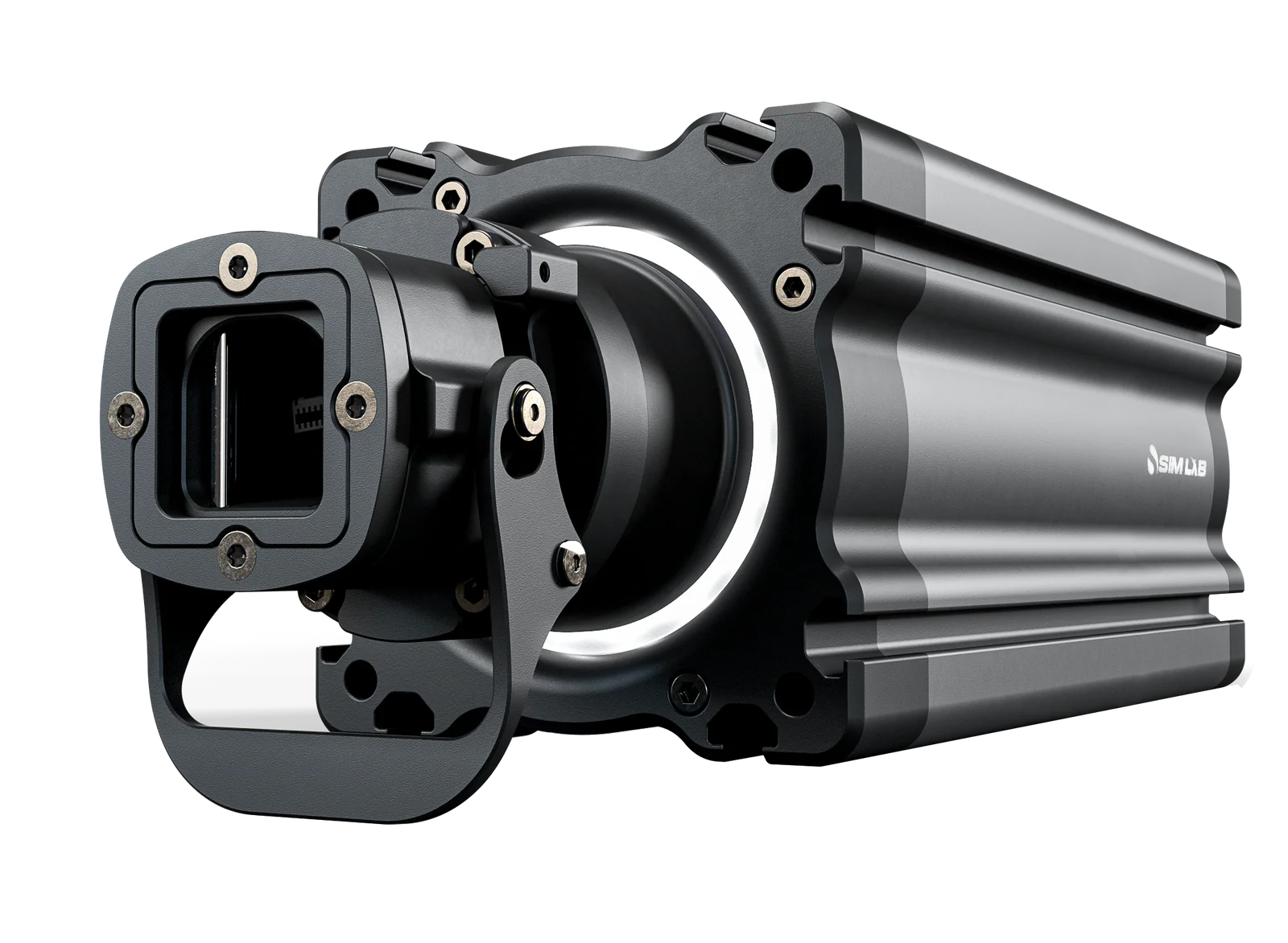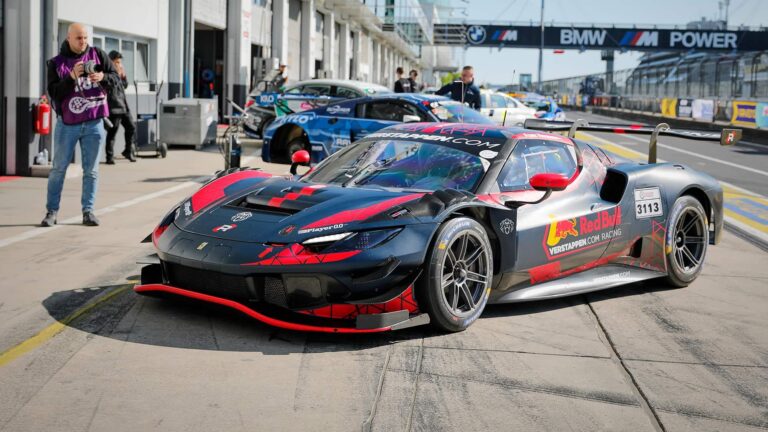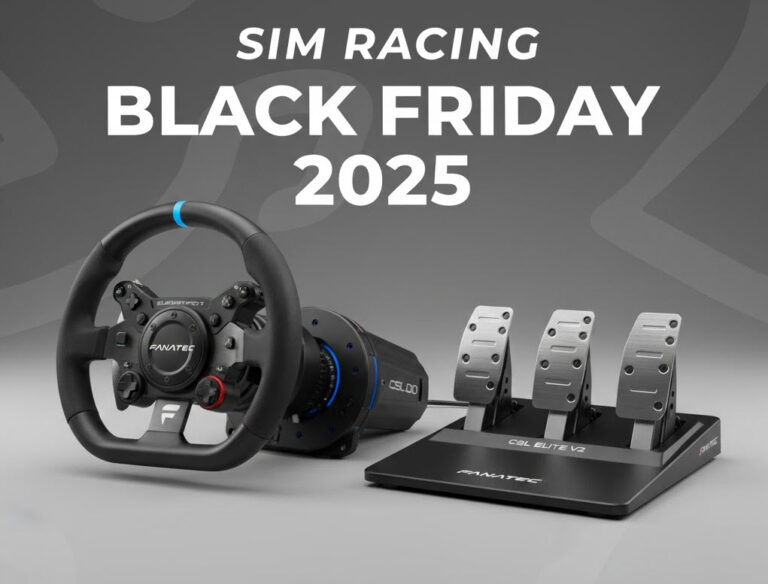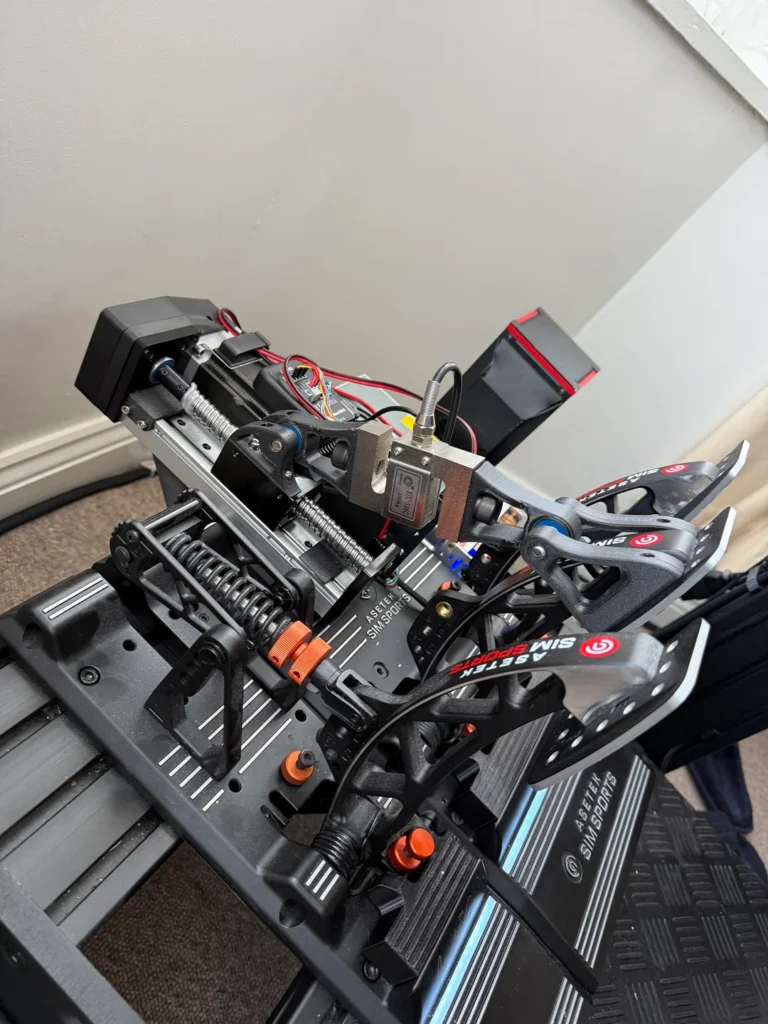Sim-Lab has just announced their DDX TorqueSync wheelbase series, and if the specs are accurate, this could be very interesting. Two models – 26Nm and 39Nm – both running on 350V internal architecture rather than the standard 48V setup most of us are used to. Pre-orders open December 1st, with first units shipping mid-February 2026.
Now, I haven’t had hands on this yet (nobody has), but the 350V power bus is worth paying attention to. Here’s why: voltage directly affects how quickly your wheelbase can change torque output. Think of it like this – a 48V system is fine, but it’s inherently limited in how fast it can respond to rapid force changes. Crank that up to 350V and you’re talking about significantly faster current slew rates, which should translate to sharper turn-in feel, better micro-detail from road surfaces, and more stable forces when things get properly hairy mid-corner.
This is the same voltage architecture you’d find in industrial CNC machines and robotics. Whether that actually makes a noticeable difference in sim racing, well, that’ll come down to proper testing once units are in people’s hands.
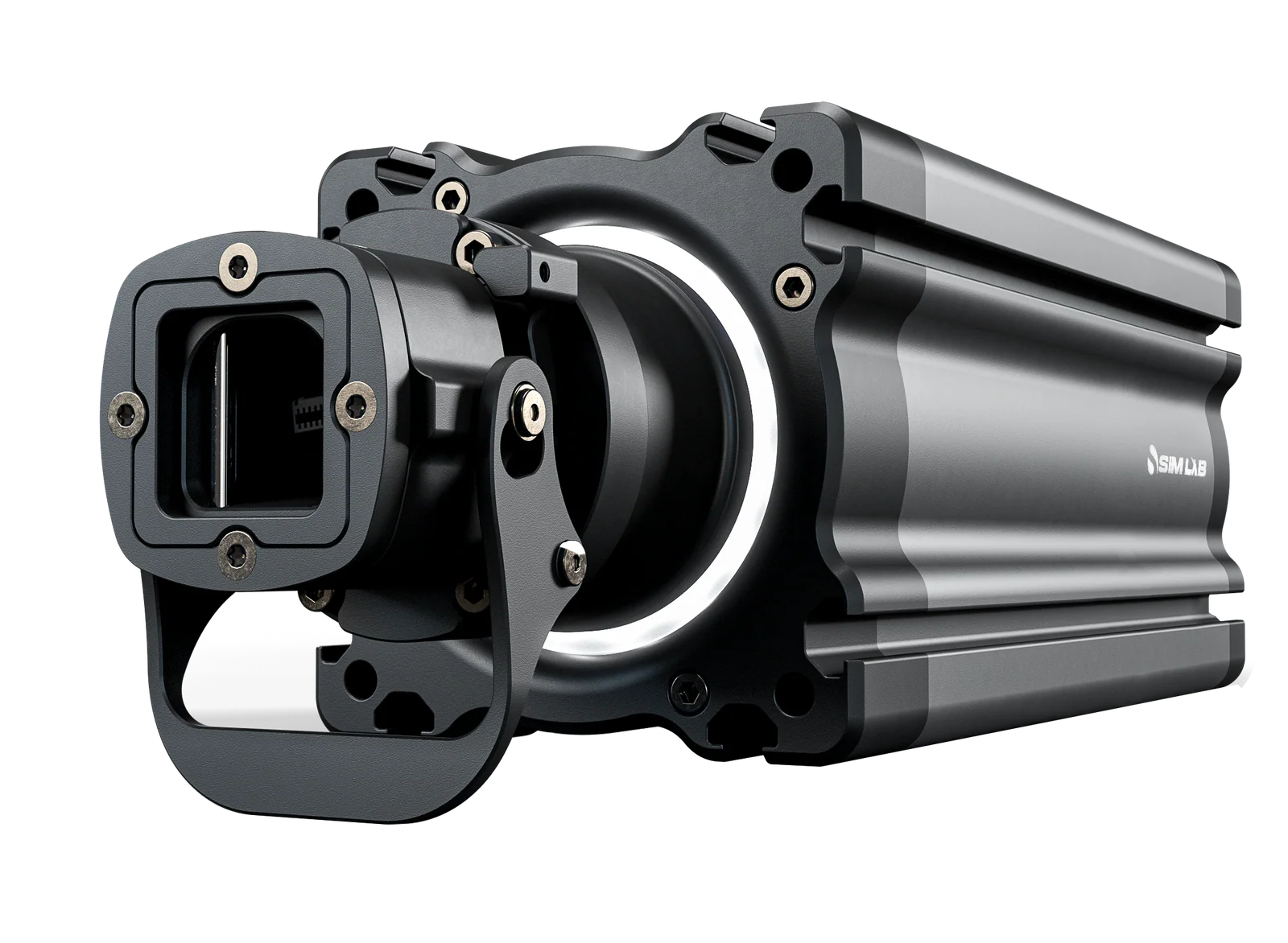
What You’re Actually Getting
The DDX-26 delivers 26Nm continuous at €1,238.84 (exc. VAT), whilst the DDX-39 pushes that to 39Nm at €2,478.51 (exc. VAT). Both use hand-built servo motors with what Sim-Lab calls “harmonised magnet pairs” and distributed-wound stator cores. The claim is this virtually eliminates torque ripple – that cogging sensation you sometimes feel at low speeds on cheaper direct drive units.
The big number they’re throwing around is a 100kHz feedback loop via their patented TorqueSync technology. For context, most high-end wheelbases run at 1-2kHz. If that 100kHz figure holds up in practice, it would make this comfortably the fastest control system available. The 24-bit encoder (16.7 million counts per revolution) should give the system extremely precise position data to work with.
Now, I’m always a bit cautious with manufacturer claims about “patented technology” until I can verify what that actually means in practice. But the underlying engineering approach here – high voltage bus, fast control loop, precise encoder – that’s all sound stuff.
The Power Supply Situation
One thing I really like here – they’ve integrated a 1,500W power supply directly into the base. No external brick to deal with. When you’re pulling 1,000W+ during peak torque events (which absolutely happens during hard impacts or rapid direction changes), that extra headroom prevents voltage sag and keeps everything stable during extended sessions.
It’s a cleaner setup too. Fewer cables, fewer potential failure points, easier to mount and move if you’re the type who rearranges your rig regularly.

The Xero-Play QR2 is a clever bit of design. Instead of putting the expensive precision mechanism on every wheel, they’ve mounted it on the base side. Buy it once, and then the wheel-side adapters are simpler and cheaper. Makes a lot of sense if you’re running multiple rims – the economics add up quickly.
No Ecosystem Lock-In
This is important – the DDX isn’t trying to lock you into buying only Sim-Lab wheels. USB 3.0 data passthrough means any USB wheel works straight away. There are five separate lines in the quick release: one provides 5V at 2A for power-hungry wheels with displays and LEDs, and four are user-assignable I/O lines for things like CAN bus or EtherCAN if you’re running more specialist kit.
The mounting is properly thought through as well. All four sides have precision slots, plus full front-mount compatibility if you need maximum rigidity. Whether you’re bolting this to a Sim-Lab rig or something completely different, it should fit without drama.
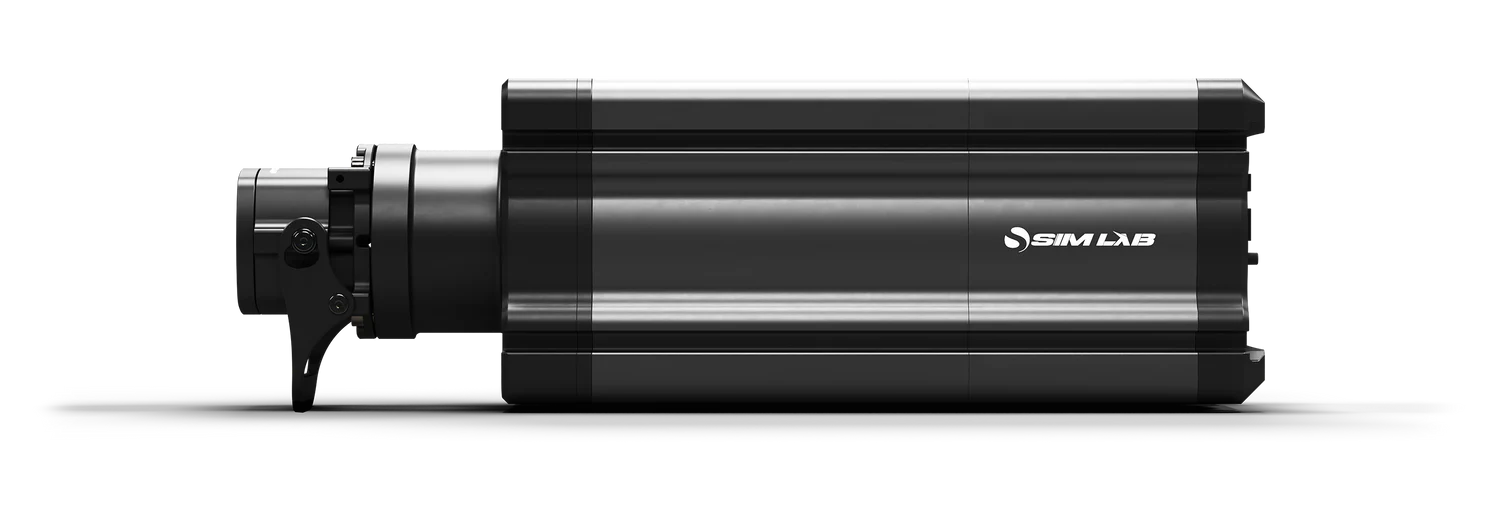
Where It Sits in the Market
Right, let’s talk money. The DDX-26 at €1,239 (exc. VAT) sits between the Simucube 2 Pro (25Nm, around €1,426) and things like the Simagic Alpha U (23Nm, roughly $949). You’re paying a premium over the Simagic, but getting that 350V architecture and the claimed 100kHz control loop.
Whether that premium is worth it depends entirely on whether you can actually feel the difference. On paper, the engineering approach is sound. In practice? We’ll need to wait for proper testing.
Current High-End Wheelbase Options
The DDX-39 at €2,478.51 (exc. VAT) is proper professional territory. That’s a significant investment, and frankly, you’d need to be running serious endurance stints or heavy GT/prototype stuff to justify that level of torque. For most people, the DDX-26 would be more than enough wheelbase.
When You Can Buy One
Pre-orders open December 1st, with first deliveries scheduled for mid-February 2026. Sim-Lab will have both models at Sim Racing Expo 2025 if you want to try before you buy, which I’d definitely recommend given the price point.
You get a four-year warranty backed by Sim-Lab’s European service network, plus they’re promising open firmware access and proper documentation. That’s a good sign – suggests they’re targeting people who actually want to understand and tune their equipment rather than just plug and play.
Full specs are on the Sim-Lab DDX page if you want to dig into the details.
The bottom line: The engineering approach here looks solid on paper – 350V architecture, fast control loop, open ecosystem, no external power brick. Whether it actually feels better than a Simucube 2 Pro or justifies the premium over a Simagic Alpha U, that’ll come down to proper testing once these units are in people’s hands. I’m interested to see how it performs, but I’m keeping my expectations realistic until we’ve got real-world feedback.

